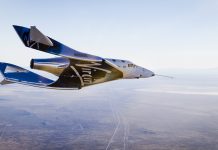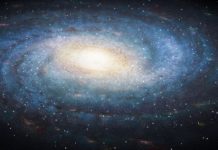Using computer models, scientists were able to simulate the formation of intermediate-mass black holes in star clusters. This opens up new ways to study mysterious objects
The Universe is teeming with black holes from stellar masses to supermassive monsters. But there is one class that remains elusive: “average” black holes. They are called intermediate-mass black holes. How common are they, how are they formed and where are they located? To answer these questions, astronomers modeled possible formation scenarios.
Intermediate-mass black holes lie in the mass gap between stellar mass and a supermassive black hole. They range from 100 to 100,000 solar masses. If they exist, do they indicate a hierarchical model of black hole formation and do small black holes form from the collapse of supermassive stars? If this is so, then intermediate-mass black holes will be a kind of “transition link” between stellar mass and supermassive black holes. If this idea is correct, then is it possible that intermediate-mass black holes could collide with each other and form the seeds of supermassive black holes? Astronomers need more observational data to answer all these questions.

At the same time, astronomers have enough data on stellar-mass black holes. They are formed during the collapse of supermassive stars. Supermassive black holes located at the centers of galaxies are most likely formed through the accretion of matter, as well as mergers with other black holes. The existence of intermediate-mass black holes appears to be beyond doubt, but their observation presents certain difficulties.
This doesn’t mean they don’t exist. Observers have found candidates for intermediate-mass black holes in the Milky Way. They also appear to be present in active galactic nuclei, where accretion effects are observed. Additionally, some ultraluminous X-ray sources may also have these “average” black holes. The Sloan Digital Sky Survey also found several potential candidates that emit strongly in the X-ray range. X-ray emission is one of the characteristics of activity around a black hole. One of the most interesting observations involves the gravitational waves emitted when two massive black holes merge. As a result, a black hole with a mass of about 150 solar masses was formed – exactly the kind of mass that can be classified as intermediate.
Simulation reveals secret of origin of intermediate-mass black holes in star clusters
Scientists are sure they exist, but still cannot determine exactly where and how they are formed. An international group led by Arca Sedda from the Gran Sassa Institute (Italy) modeled the possible mechanisms of their formation.

“Current observational limitations do not allow us to say anything definitive about the population of intermediate-mass black holes with masses between 1,000 and 10,000 solar masses, and they cause headaches for scientists regarding the possible mechanisms of their formation,” Sedda explained.
Sedda and his team looked at star clusters as possible birthplaces for intermediate-mass black holes, and they created computer models that could simulate the formation of these mysterious objects using DRAGON-II data. This is a collection of 19 computer models representing dense clusters of up to a million stars each. Using these in further simulations, the team discovered that the objects they were interested in could form star clusters. This occurs due to a complex combination of three factors: mergers between stars much more massive than the Sun, accretion of matter from the star onto stellar-mass black holes, and mergers between stellar-mass black holes.
“The latter process makes it possible to ‘see’ these phenomena through the detection of gravitational waves,” Sedda explained. The team also hypothesized what happens after the birth of intermediate-mass black holes. They appear to be ejected from their clusters by complex gravitational interactions, or experience “relativistic recoil” when formed. This keeps them from gaining weight.
“Our models show that although seeds form naturally from interactions in star clusters, they are unlikely to become heavier than a few hundred solar masses unless the parent cluster is extremely dense or massive,” Sedda said.
Finding out the history of the origin of these black holes still does not answer the question of whether they are the missing link between stellar and supermassive black holes.
For a better understanding, we need two ingredients: one or more processes capable of forming black holes in the intermediate mass range and the ability to preserve such black holes. Our study places strict constraints on the first ingredient, providing clear insight into what processes may contribute to the formation of intermediate-mass black holes. Looking at more massive clusters containing more binary star systems in the future may be the key to obtaining the second ingredient. But this will require enormous effort from a technological and computational point of view.




